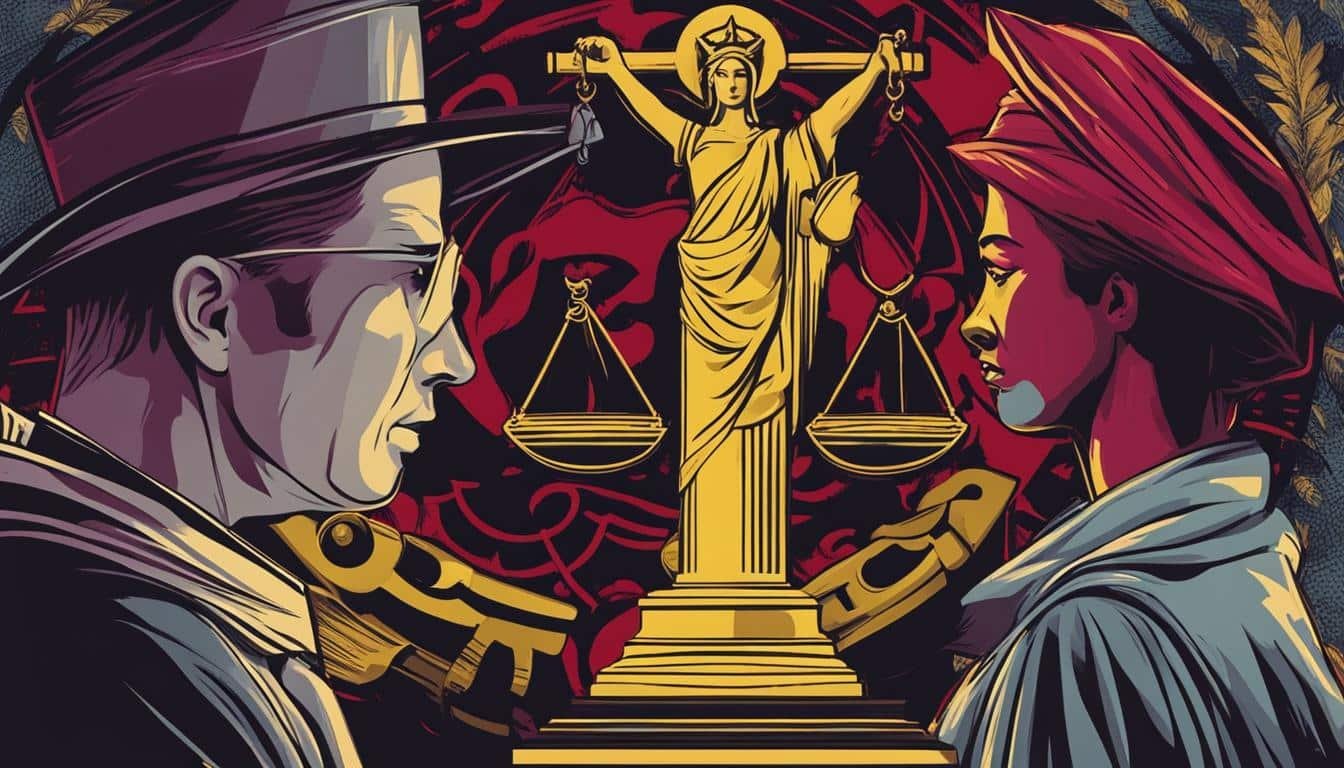Digital obscenity and internet crime laws are regulations that govern and address various illegal activities that occur online. These laws are in place to prevent and punish acts such as the distribution of explicit or obscene content, online harassment, child exploitation, and other cybercrimes. Violators of these laws can face significant fines and even imprisonment.
These laws also provide definitions and criteria for determining what constitutes obscene or sexually explicit material. They aim to establish guidelines that help law enforcement and legal authorities identify and take action against individuals or entities engaged in illegal activities on the internet.
Key Takeaways:
- Digital obscenity and internet crime laws regulate illegal activities that occur online.
- They aim to prevent and punish acts such as distribution of explicit or obscene content, online harassment, child exploitation, and other cybercrimes.
- Violators can face significant fines and imprisonment.
- These laws provide definitions and criteria for determining obscene or sexually explicit material.
- The laws help law enforcement take action against individuals or entities engaged in illegal activities on the internet.
Understanding Obscenity and Pornography Laws
In the digital age, the regulation of obscenity and pornography has become a pressing issue. It is essential to understand the laws surrounding these areas to navigate the online space responsibly and avoid legal repercussions. Obscenity laws aim to define and prohibit the distribution and possession of pornographic materials that are deemed illegal. These laws differ from pornography laws, which govern sexually explicit content that may not be considered obscene. Let’s delve into the intricacies of obscenity and pornography laws to gain a clearer understanding of their implications.
The Definition of Obscenity
Defining what is considered obscene can vary by jurisdiction, but there are general criteria to assess content’s obscenity. It typically involves material that appeals to prurient interests, depicts sexual conduct in an offensive manner, and lacks any serious value in artistic, literary, political, or scientific aspects. To determine if content qualifies as obscenity, legal systems often rely on the Miller test, established by the U.S. Supreme Court in the 1973 case Miller v. California. This test evaluates the content’s appeal, offensiveness, and value to establish its legal status.
Distribution and Possession of Obscene Materials
Federal and state laws in the United States regulate the distribution and possession of obscene materials. These laws aim to prevent the dissemination of content that is considered offensive and lacks societal value. Violators can face severe penalties, including fines and imprisonment. However, it is important to note that not all sexually explicit content falls under the category of obscenity. Pornography laws govern sexually explicit materials that are not considered obscene but may still be subject to certain restrictions, such as age verification and consent requirements.
The Impact of Obscenity and Pornography Laws
Obscenity and pornography laws play a crucial role in society by setting boundaries for acceptable content and preventing the exploitation or harm caused by pornographic materials. These laws aim to maintain public decency and protect vulnerable individuals, particularly children, from exposure to explicit material. However, the interpretation and enforcement of these laws can be complex and have faced criticism due to the subjective nature of obscenity and the challenges of applying traditional legal frameworks to the digital landscape.
| Pros | Cons |
|---|---|
| Protection of public decency | Subjective nature of obscenity |
| Prevention of harm to vulnerable individuals | Difficulties in enforcing laws in the digital age |
| Establishment of boundaries for acceptable content | Controversies regarding freedom of expression |
Table: Pros and Cons of Obscenity and Pornography Laws
Overall, understanding the intricacies of obscenity and pornography laws is vital for navigating the digital landscape responsibly. These laws serve to protect individuals from offensive and harmful materials while addressing the complexities of freedom of expression and societal values. It is crucial to stay informed about the legal frameworks surrounding obscenity and pornography to ensure compliance and responsible online behavior.
Key Digital Crime Laws in the United States
In the United States, several federal laws have been enacted to address digital crimes and cyber-related offenses. These laws play a crucial role in combatting illegal activities and protecting individuals from online threats. Let’s take a closer look at some key digital crime laws in the United States.
1. Importation or Transportation of Obscene Materials
One important digital crime law is the prohibition on the importation or transportation of obscene materials. Under this law, it is illegal to bring or transport obscene materials into the United States. The law aims to prevent the distribution of explicit or offensive content that violates community standards.
2. Transportation of Obscene Matters for Sale or Distribution
Another significant digital crime law is the regulation of the transportation of obscene matters for sale or distribution. This law criminalizes the movement of obscene materials with the intent to sell or distribute them. It aims to curb the commercial distribution of explicit content that may harm individuals or society.
3. Production, Distribution, and Possession of Obscene Visual Depictions of the Sexual Abuse of Children
The United States also has laws specifically targeting the production, distribution, and possession of obscene visual depictions of the sexual abuse of children. These laws aim to protect minors from exploitation and punish those involved in the creation, dissemination, and possession of such illegal materials.
These are just a few examples of the digital crime laws in the United States. These laws, along with others, provide a legal framework to address various forms of cybercrimes and protect individuals from the adverse effects of digital obscenity and internet crime.
| Digital Crime Law | Description |
|---|---|
| Importation or Transportation of Obscene Materials | Prohibits the importation or transportation of obscene materials into the United States. |
| Transportation of Obscene Matters for Sale or Distribution | Criminalizes the transportation of obscene materials with the intent to sell or distribute them. |
| Production, Distribution, and Possession of Obscene Visual Depictions of the Sexual Abuse of Children | Targets the production, distribution, and possession of obscene visual depictions of child sexual abuse. |
Jurisdictional Challenges in Combating Digital Crimes
When it comes to combating digital crimes, one of the biggest hurdles that law enforcement agencies face is the issue of jurisdiction. With cybercrimes transcending geographical boundaries, determining which laws apply and which law enforcement agencies have jurisdiction can be a complex task.
Factors such as the location of the offense and the offender, as well as the involvement of different states or countries, further complicate the prosecution of digital crimes. In cases involving international borders and differing legal systems, the challenges become even more pronounced.
Law enforcement agencies and legislators must navigate these jurisdictional challenges in order to effectively investigate and prosecute digital crimes. Cooperation and coordination between different agencies are crucial to ensure that no criminals slip through the cracks.
Moreover, the advancement of technology has given rise to new challenges. The borderless nature of the internet makes it easier for offenders to operate from different jurisdictions, evading authorities. Efforts are being made to establish international cooperation and agreements to address these challenges.
Source Links
- https://www.law.cornell.edu/uscode/text/18/2252C
- https://www.sciencedirect.com/topics/social-sciences/obscenity
- https://www.oas.org/juridico/spanish/cyber/us_cyb_law_porn_child.pdf







